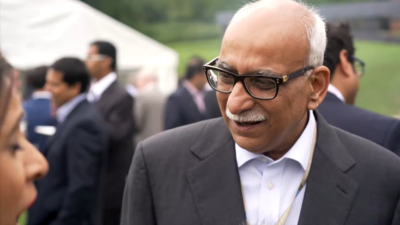UP says Sambhal masjid well is public, SC seeks mosque management’s reply in 2 weeks | India News

NEW DELHI: The Uttar Pradesh govt on Tuesday informed Supreme Court that the disputed Shahi Jama Masjid at Sambhal is situated on a public land, and that the well near it, locally known as ‘Dharani Varah koop‘, is also on public land with no access from inside the mosque.
After SC had stayed the trial court’s order issued on Nov 24 last year, directing survey of the disputed site – claimed by Hindu side to be ‘Shri Hari Har temple’ – by a local commissioner after the mosque management had moved the SC seeking status quo with respect to “the private well situated near the stairs/entrance of the mosque”. The apex court had sought a status report on the well from the Uttar Pradesh govt.
Additional solicitor general K M Nataraj told a bench of Chief Justice Sanjiv Khanna and Justice Sanjay Kumar that “the well is a public well and is not situated anywhere inside the mosque/disputed religious site. In fact, there is no access to the well from inside the mosque”.
When the bench asked why the management committee has not responded to the Feb 22 status report till date, senior advocate Huzefa Ahmadi said it was delayed as the authorised person is in jail. The court asked the management to file its reply in two weeks.
UP govt’s status report said the mosque management committee suppressed from the court that “there is in fact a well within the boundary walls of the mosque/disputed religious site locally known as ‘yagna koop’. There has been no interference in the said well ‘yagna koop’.”
Accusing the mosque management committee of misleading SC by pleading that ‘Dharani Varah’ well is located inside the mosque, the state govt said, “The well outside the mosque was in use since time immemorial by persons of all communities. However, now it has no water, and it was further found that after the communal riots of 1978, a police chowki was built on top of one part of the well. Sometime in 2012, the well was covered and at present there is no water in it.”
The state said that it is attempting to revive culturally significant sites in Sambhal district, which involves conservation and restoration of 19 historically significant wells. The well in question is one of the 19 wells, it said.




